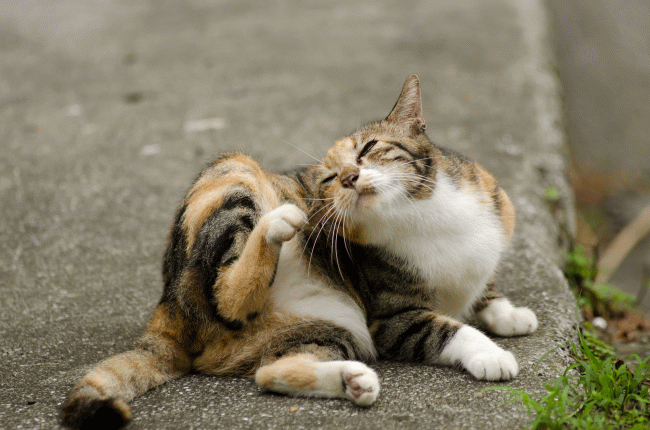
As any experienced pet parents can attest, a flea infestation may be expected at least once in a pet’s life (particularly if that pet is a dog). Running around outside, meeting and playing with other animals at the park or on a walk means your dog or cat will be exposed to a variety of bugs, ticks and parasites you may not even be aware of. Fortunately, because fleas are a common canine problem there are many treatment options available to help kill the fleas and keep them from ever returning! If your dogs has managed to evade these pests, consider yourself lucky and review the go-to products below in case the bugs should ever strike!
- Flea Shampoos: One quick way to kill off festering insects is to give the dog or cat a full-body shampoo. Be wary of getting a shampoo that is not strong enough and will only detach the fleas from your dog’s coat rather than killing them completely. Follow our flea shampooing instructions to make sure that there is no remnant of flea activity surviving when the suds are all rinsed away.
- Flea Combs: Using a thin-toothed flea comb, pet parents can sift through their animal’s fur to see if there are any ticks or fleas to find out how severe the infestation might be. Be advised that attempting to entirely remove all the bugs from the fur will only ever prove 10-50% successful at best, and at worst may only transport the fleas somewhere else. (Fleas hop easily from one surface to the next, so unless you kill them in soapy water immediately after each time you comb, they might have a chance to escape into your carpet, or in the grass where your dog could catch them again.) In summary, a flea combs is most useful when it comes to finding and removing fleas, not attempting to remedy the entire infestation.
- Flea Collars: Another popular way to guard against parasites is to put a flea collar on your cat or dog. These circlets clasp around the neck as a normal collar, but are created with potent insecticides that spread throughout an animal’s coat, that will ward off any unwanted pests. Some collars repel bugs, and others are designed to kill existing eggs and fleas, or any other insect that might land on or bite the pet. Used largely as a preventive measure, a flea collar is the perfect “security” measure following a strong anti-flea and tick shampoo, to ensure that the insects do not return.
- Anti-Parasite Sprays: These sprays work as a wet wash over pet coats covered in fleas. Most of them are designed to kill the bugs on contact, and can work as effectively as flea shampoos when time is short. Bear in mind when using an insecticide spray that it should be done outside so that the contents will not be inhaled.
- Oral Medications: Because fleas can spread and reproduce quickly, the concept of trying to keep them physically under control seems nearly impossible to many. One way to combat this is to administer oral medications that are fed to the pet either once a day for some products, or once a month for those that are stronger. A single pill prescribed by veterinarians (such as the product Comfortis and Program Flea Killer) kills all existing fleas within 4 hours, and keeps the animal free from pests for weeks.
- Topical Medications: If per owners \prefer to avoid giving their pets digestible medications, the topical treatments are another tried-and-true way to kill bugs. These medications can be administered by putting few drops on the pet’s shoulders, and may be purchased over the counter, or via prescription.
- Home & Furniture Sprays. If your dog has fleas, then any cloth-covered surface or carpeted area where your pet might roam, is susceptible as well. Flea-killing furniture spray will ensure that your favorite lounging area is protected from bugs. There are also carpet crystals (flea-killing powders) that can be sprinkled across a carpeted floor, brushed onto cushions and couches, reaching over 1,000 square feet. Since spraying substances into the air and on the upholstery requires humans to have contact with the insecticides, some pet owners are concerned about subjecting their families to such strong killing agents. Fortunately, there are also nontoxic sprays and remedies that people can use in lieu of the aerosol sprays. From combinations of cedar oil, to garlic and yeast, and carpet powders, these will help rid the house of fleas, without wreaking havoc on human (or animal) lungs.

